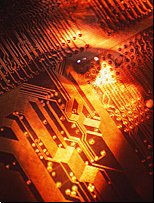ElectriPlast . . . An Addendum

Expression
Defined. . .
By Vince S.
ElectriPlast Blog Editor
Many questions surfaced regarding the prospect of ElectriPlast replacing copper.
The reality is, there are many applications where the base metal is required. Even in the article, "Move over Number 29," there was never a mention of ElectriPlast replacing Copper, as much as it offered the "potential" to substitute for some copper applications; i.e., airplanes, motors, autos, etc.
In short, there are areas in which ElectriPlast makes more sense; i.e., where connectivity, malleability and light weight are factors - BINGO! Go with ElectriPlast. However, where conductivity, malleability and heavy weight is required, copper is the metal of choice.
Just for laughs, here's another area in which ElectriPlast, had it been available at the time, would not have replaced copper...
In the early days of wooden hulls and canvass sail, sailors and merchant mariners armed their vessels with iron cannon that fired iron balls. How did they keep all those balls from rolling on a pitching deck?
Someone devised a stacking methodology that was based on the pyramid. One ball on top, sitting on four, sitting on nine, sitting on sixteen. This ingenious stacking method allowed a stack of 30 balls to be conveniently placed at a battle station adjacent to the cannon. However, that, in turn presented another problem. Specifically, how to stabilize the cannon ball stack on a rolling deck.
Had this solution not been found by October 21, 1805, we would be living in a totally different world today. That was the day when Lord Nelson defeated the French-Spanish Fleet at the Battle of Trafalgar, ending Napoleon's plans to destroy the Royal Navy and invade England. Some of the ships of the line at Trafalgar were three-deckers with up to 120 cannon. With 30 balls per cannon rolling around the decks (do the math), just imagine how that battle would have fared.
- The solution: a plate with 16 round dents to house the lower level of the iron cannon ball stack.
It was commonly called a "Monkey." If the plate were made of the same material as the cannon and the cannon balls--iron--sea spray and humidity would quickly rust the iron balls to the "Monkey."
- Solution number two? Make the "Monkey" from a brass (copper and zinc mixture) plate.
In sea trials, it was discovered that iron balls won't rust to brass plates; however, brass contracts at a faster rate than iron when chilled. So when temperatures at sea dropped too far, the dents on the "Brass Monkey" shrank, dumping the iron balls on the deck.
Thus was born the expression, "Cold enough to freeze the balls off a brass monkey."








0 Comments:
Post a Comment
<< Home